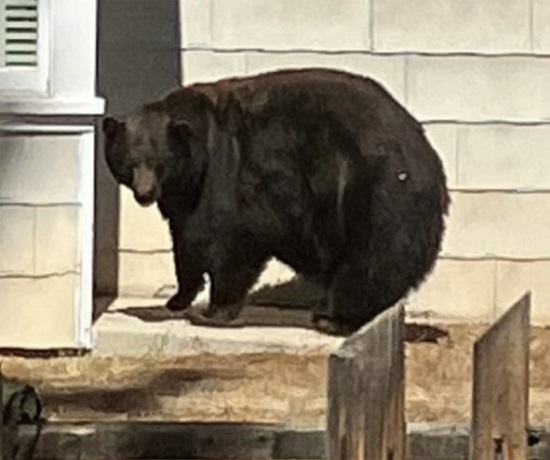Bears Destined for Wildlife Sanctuary in Colorado and Rehabilitation Facility in Sonoma County
Wildlife biologists for the California Department of Fish and Wildlife (CDFW) this morning safely immobilized a large female conflict bear responsible for at least 21 DNA-confirmed home break-ins and extensive property damage in the South Lake Tahoe area since 2022. Her three cubs were also captured in the effort.
Pending a successful veterinary check, CDFW has secured permission from the State of Colorado to transport the female black bear, known as 64F, and place it with The Wild Animal Sanctuary near Springfield, Colorado, which has agreed to care for it in its expansive facilities. This large black bear is one of multiple bears identified by the public last year as “Hank the Tank” based on visual observations.
Colorado Parks and Wildlife has the authority to approve only one such placement and is using that authorization for this bear. Relocation is not typically an option for conflict animals over concern that relocating an animal will relocate the conflict behavior to a different community. However, given the widespread interest in this bear, and the significant risk of a serious incident involving the bear, CDFW is employing an alternative solution to safeguard the bear family as well as the people in the South Lake Tahoe Community.
 CDFW file photo of conflict black bear 64F.
CDFW file photo of conflict black bear 64F.
The sow's three young cubs, which have accompanied the bear on recent home break-ins, will potentially be relocated to Sonoma County Wildlife Rescue, a CDFW-permitted wildlife rehabilitation facility in Petaluma in hopes they can discontinue the negative behaviors they learned from the sow and can be returned to the wild. All three cubs were given a health assessment in the field before transfer and will receive additional examination at the facility. One of the cubs is believed to have suffered serious injuries from a vehicle strike earlier this month, though is still mobile. The injured cub will be given a thorough veterinary evaluation.
Bear 64F has been monitored closely by CDFW since 2022. In March of 2023, she was discovered denning under a residence in South Lake Tahoe along with her three male cubs of the year. Staff from CDFW and the Nevada Department of Wildlife immobilized the bear, collected DNA evidence, attached an ear tag and affixed a satellite tracking collar to the bear. Staff also implanted Passive Integrated Transponders, known as PIT tags, into the cubs for future identification. The PIT tags contain a microchip similar to what’s implanted into pet dogs and cats for identification.
Bear 64F shed the satellite tracking collar last May. The bear’s DNA, however, has been confirmed at 21 home invasions in the South Lake Tahoe area between February 2022 and May 2023 with the bear suspected in additional break-ins and property damage.
CDFW’s updated Black Bear Policy (PDF), released in February 2022, allows for the placement and relocation of conflict bears in limited circumstances when other management options have been exhausted and as an alternative to lethal actions.
Media Contact:
Jordan Traverso, CDFW Communications, (916) 212-7352